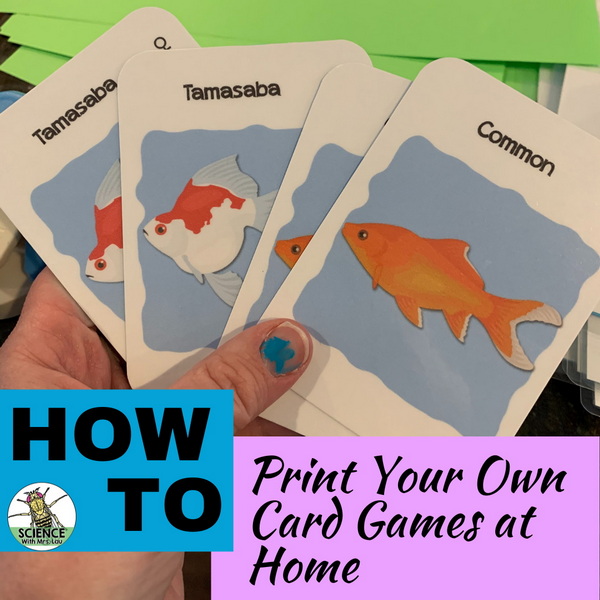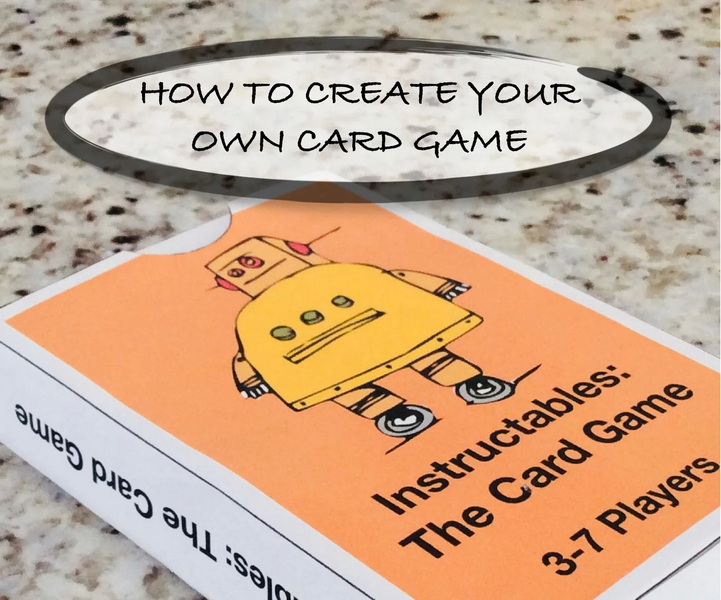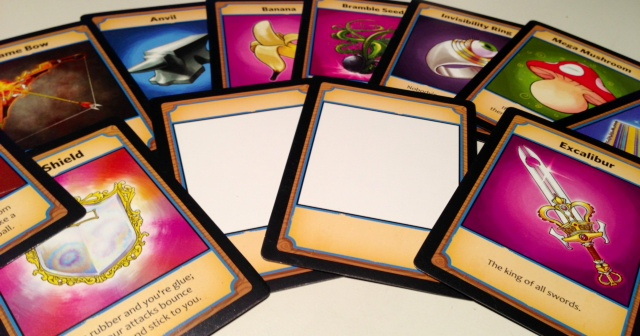Content Menu
● Conceptualization: Define Your Game Idea
● Writing It Down: Document Your Ideas
● Designing Your Cards
● Prototyping Your Game
● Refining Gameplay Through Testing
● Finalizing Your Design
● Manufacturing Your Game
● Marketing Your Game
● Launching Your Game
● Graphic Design Considerations
● Rulebook Writing Tips
● Conclusion
● Related Questions
>> 1. What are some common types of card games?
>> 2. How do I balance my card game's mechanics?
>> 3. What software can I use to design my cards?
>> 4. How important is playtesting?
>> 5. Can I sell my homemade card game?
● Citations:
Creating your own card game can be an exciting and rewarding venture. It combines creativity, strategic thinking, and a bit of technical skill. Whether you're looking to create a casual party game or a complex strategy game, this guide will walk you through the essential steps to design, develop, and launch your own card game.

Conceptualization: Define Your Game Idea
The first step in creating your card game is to narrow down your theme and game mechanics.
- Choose a Theme: Consider what interests you and what themes resonate with potential players. Themes can range from fantasy and science fiction to historical events or even abstract concepts. A well-defined theme will help guide your game's mechanics and design.
- Define Game Mechanics: Think about how players will interact with the game. Will it be competitive or cooperative? What actions can players take on their turn? Establishing clear mechanics is crucial as they dictate the flow of the game.
- Identify Your Audience: Understanding who will play your game is vital. Are they casual gamers, families, or hardcore strategists? Tailoring your game to a specific audience will enhance its appeal.
Writing It Down: Document Your Ideas
Once you have a solid concept, it's time to write everything down. This documentation should include:
- Game Rules: Clearly outline how the game is played, including setup, turn structure, win conditions, and any special rules.
- Card Types: Define different types of cards (e.g., action cards, resource cards, character cards) and their functions within the game.
- Game Flow: Create a flowchart that maps out the gameplay from start to finish. This visual representation can help clarify how players progress through the game.
Designing Your Cards
With your rules and mechanics in place, you can begin designing the actual cards:
- Card Layout: Decide on a layout for your cards that includes essential elements like the card name, artwork, description of effects, and any costs associated with playing the card.
- Artwork: If you're artistically inclined, create your own illustrations; otherwise, consider hiring an artist or using stock images that fit your theme.
- Card Template: Use graphic design software (like Adobe Illustrator or free alternatives like GIMP) to create a template for your cards. Ensure that all key information is easily readable and visually appealing.
Prototyping Your Game
Before finalizing your game design, create a prototype:
- Materials: Use blank index cards or cardstock to print out your designs. You can also use online tools that allow you to create custom card designs for prototyping.
- Playtesting: Gather friends or family to playtest your game. Observe how they interact with it and take notes on their feedback regarding balance, fun factor, and clarity of rules.
Refining Gameplay Through Testing
Testing is crucial in the development process:
- Iterate Based on Feedback: After playtesting sessions, refine your rules and card designs based on player feedback. Look for patterns in comments—if multiple players mention confusion about a rule or card effect, it's likely worth revisiting.
- Balance Your Game: Ensure that no single card or strategy dominates gameplay. This may involve adjusting card effects or costs to promote diverse strategies.
Finalizing Your Design
Once you've tested and refined your prototype:
- Create Final Versions of Cards: Using feedback from playtests, finalize your card designs with polished artwork and clear text.
- Rulebook Creation: Write a comprehensive rulebook that explains how to set up the game, play it step-by-step, and resolve any disputes that may arise during gameplay.

Manufacturing Your Game
If you're looking to produce physical copies of your card game:
- Choose a Manufacturer: Research different manufacturers who specialize in card games. Look for reviews regarding quality and customer service.
- Print-On-Demand Services: Consider using print-on-demand services like The Game Crafter if you're unsure about initial quantities or want to avoid high upfront costs.
Marketing Your Game
Once you have physical copies ready:
- Create an Online Presence: Utilize social media platforms to showcase your game's artwork and mechanics. Engaging with potential players early can build interest before launch.
- Attend Game Conventions: Showcasing at conventions allows you to demo your game directly to enthusiasts and gather valuable feedback from a broader audience.
Launching Your Game
When you're ready:
- Set Up Sales Channels: Decide whether you'll sell directly through an online store or use platforms like Kickstarter for crowdfunding.
- Engage with the Community: Continue interacting with players post-launch for ongoing feedback which can inform expansions or future projects.
Graphic Design Considerations
Effective graphic design plays a crucial role in making your card game visually appealing and easy to understand:
- Typography: Use legible fonts at appropriate sizes for readability across different viewing distances. For example, body text should be around 10–12pt when viewed up close but increase this size for readability across tables[1].
- Simplicity in Text: Aim for brevity in card text; if something can be said in fewer words without losing meaning, do it! Limit text on each card to two or three lines[1][4].
- Use of Symbols: Implement symbols for frequently used phrases to minimize text clutter on cards[1]. This not only saves space but also enhances gameplay speed as players become familiar with these symbols over time.
Rulebook Writing Tips
A well-written rulebook is essential for player engagement:
- Clarify Objectives Early On: Clearly state what players are trying to achieve right at the beginning of the rulebook[2][8].
- Use Examples Wisely: Provide examples of gameplay scenarios that illustrate complex rules or edge cases[2]. This helps players understand interactions better without needing extensive background knowledge.
- Organize Information Logically: Structure the rulebook so that it flows naturally from setup through gameplay phases[2][8]. This makes it easier for new players to follow along without feeling overwhelmed by information.
Conclusion
Creating a card game is an intricate process that requires creativity, planning, testing, and refinement. By following these steps—from conceptualization through marketing—you can develop a unique card game that resonates with players and stands out in the market. Remember that persistence is key; many successful games have undergone numerous iterations before finding their final form.

Related Questions
1. What are some common types of card games?
Card games can be categorized into various types including trick-taking games (like Bridge), matching games (like Rummy), shedding games (like Uno), collecting games (like Pokémon), and deck-building games (like Dominion).
2. How do I balance my card game's mechanics?
Balancing mechanics involves ensuring no single strategy or card dominates gameplay. Test extensively with different player groups and adjust costs or effects based on feedback until all strategies feel viable.
3. What software can I use to design my cards?
Graphic design software like Adobe Illustrator or free alternatives such as GIMP are great for designing cards. Additionally, there are online platforms specifically for creating custom cards which can simplify this process.
4. How important is playtesting?
Playtesting is crucial as it provides insight into how real players interact with your game. It helps identify issues with rules clarity, balance problems, and overall enjoyment which can guide necessary adjustments before final production.
5. Can I sell my homemade card game?
Yes! Once you've developed and refined your game, you can sell it through various channels such as online marketplaces like Etsy or Kickstarter for crowdfunding support before production.
Citations:
[1] https://danielsolisblog.blogspot.com/2011/11/5-graphic-design-and-typography-tips.html
[2] https://islaythedragon.com/featured/laying-down-the-law-a-guide-to-rulebook-writing/
[3] https://thesciencesurvey.com/arts-entertainment/2021/03/21/blank-cards-how-do-you-create-a-card-game-from-scratch/
[4] https://www.reddit.com/r/boardgames/comments/lfkj3u/how_much_text_on_a_simple_card_game_is_too_much/
[5] https://www.qinprinting.com/blog/create-a-custom-card-set-to-sel/
[6] https://potatopirates.game/blogs/computer-science/how-to-create-a-card-game
[7] https://www.wvced.com/product/writing-card-games-pack/
[8] https://spacebiff.com/2013/07/11/board-game-manuals-how/
[9] https://www.reddit.com/r/tabletopgamedesign/comments/rd2vn0/how_to_make_a_card_game/
[10] https://praliedutzel.wordpress.com/2013/01/31/creating-a-card-game-from-start-to-finish/
































